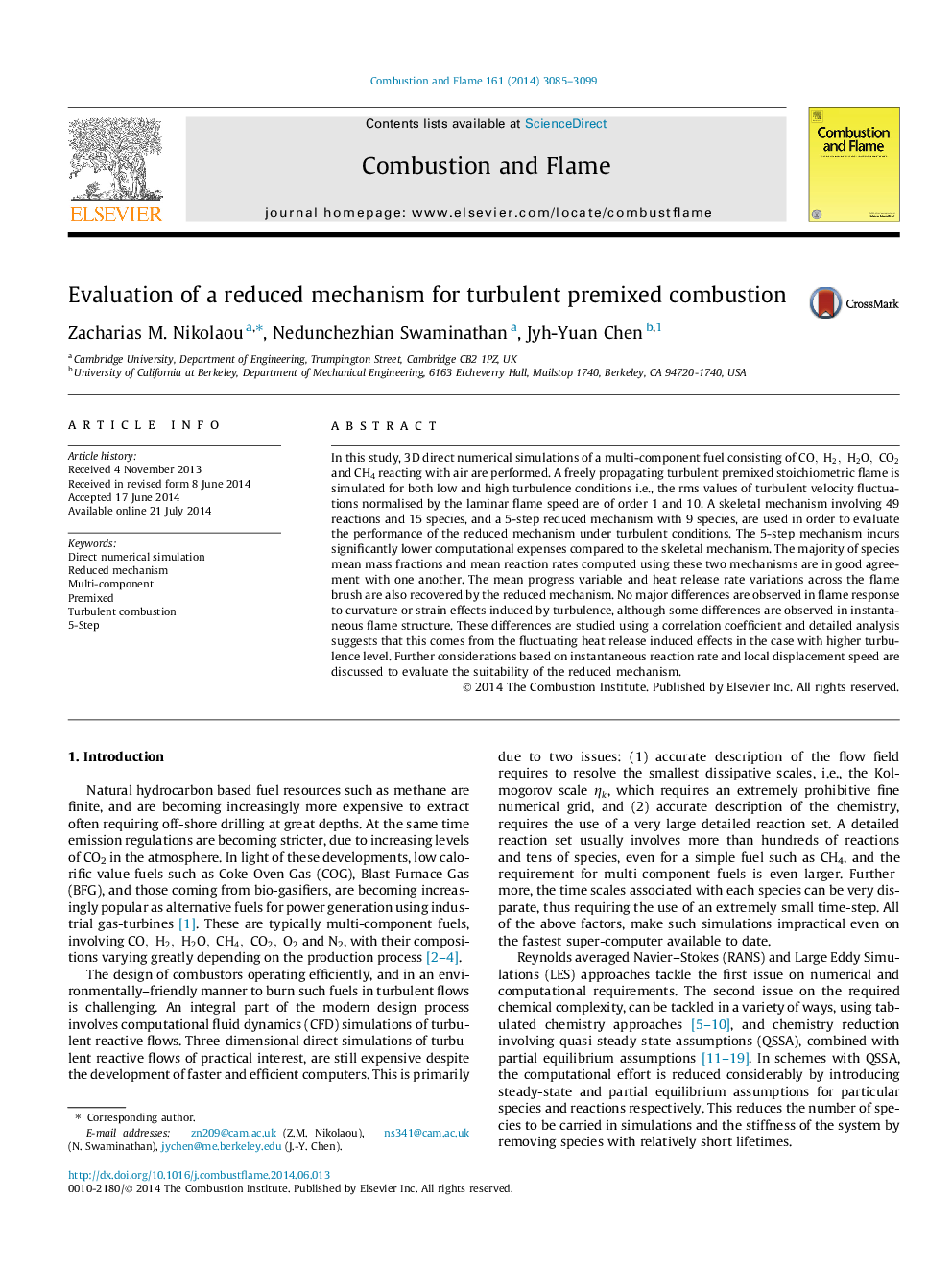| Article ID | Journal | Published Year | Pages | File Type |
|---|---|---|---|---|
| 10264386 | Combustion and Flame | 2014 | 15 Pages |
Abstract
In this study, 3D direct numerical simulations of a multi-component fuel consisting of CO,H2,H2O,CO2 and CH4 reacting with air are performed. A freely propagating turbulent premixed stoichiometric flame is simulated for both low and high turbulence conditions i.e., the rms values of turbulent velocity fluctuations normalised by the laminar flame speed are of order 1 and 10. A skeletal mechanism involving 49 reactions and 15 species, and a 5-step reduced mechanism with 9 species, are used in order to evaluate the performance of the reduced mechanism under turbulent conditions. The 5-step mechanism incurs significantly lower computational expenses compared to the skeletal mechanism. The majority of species mean mass fractions and mean reaction rates computed using these two mechanisms are in good agreement with one another. The mean progress variable and heat release rate variations across the flame brush are also recovered by the reduced mechanism. No major differences are observed in flame response to curvature or strain effects induced by turbulence, although some differences are observed in instantaneous flame structure. These differences are studied using a correlation coefficient and detailed analysis suggests that this comes from the fluctuating heat release induced effects in the case with higher turbulence level. Further considerations based on instantaneous reaction rate and local displacement speed are discussed to evaluate the suitability of the reduced mechanism.
Related Topics
Physical Sciences and Engineering
Chemical Engineering
Chemical Engineering (General)
Authors
Zacharias M. Nikolaou, Nedunchezhian Swaminathan, Jyh-Yuan Chen,
